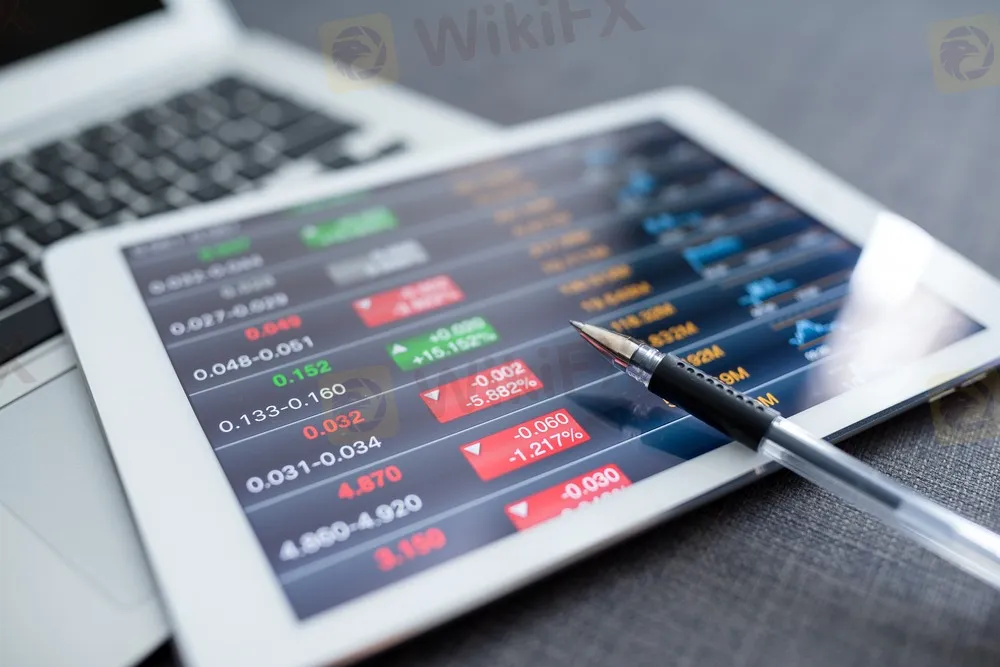简体中文
繁體中文
English
Pусский
日本語
ภาษาไทย
Tiếng Việt
Bahasa Indonesia
Español
हिन्दी
Filippiiniläinen
Français
Deutsch
Português
Türkçe
한국어
العربية
Learn to Trade Without Risk: The Power of Paper Trading
Sommario:Paper trading is a technique that allows you to practice trading without risking real money. Essentially, it involves simulating buying and selling operations in financial markets using real-time mark
Paper trading is a technique that allows you to practice trading without risking real money. Essentially, it involves simulating buying and selling operations in financial markets using real-time market data, but without executing actual transactions. This method enables you to experiment with and test trading strategies and their effectiveness in a risk-free environment.
Unlike real trading, paper trading does not require the use of capital. In real trading, every decision you make directly affects your account and can result in a profit or loss. With paper trading, decisions are made in a simulated environment, allowing you to analyze the impact of your strategies without facing the financial risks present in the market.
The operation of paper trading is straightforward. You simply create a demo account where all theoretical operations are recorded. Real market data is used to simulate purchases and sales, although these transactions have no real effect on the market or finances. This simulation helps you understand how your decisions may affect the market and simultaneously allows you to refine your skills before trading with real money.
Paper Trading vs. Real Trading
Broker demo accounts closely mimic the real accounts provided by brokers, but there are key differences to consider. For instance, the execution of orders in demo accounts is different from real accounts.
In a real account, the order is actually executed in the market, while in a demo account, the price reading and execution are simulated because the funds are virtual. Additionally, if you aim to test the speed of a broker's server, paper trading may not be suitable. Brokers often use different servers for demo and live accounts, allocating varying resources to each. To accurately test server speed, opening a live account is a better option.
Another limitation of paper trading is its inability to replicate slippage conditions—when there is a difference between the price at which an order is placed and its actual execution price in the market.

Types of Paper Trading
Depending on the type of asset you want to trade, the following types of paper trading are available:
Stocks
CFDs
Cryptocurrencies
Forex
Futures
Commodities
5 Benefits of Paper Trading
Paper trading offers several significant advantages that can transform your approach to trading. Practicing in a simulated environment protects your capital and gains valuable experience, preparing yourself for the real market. Below are five key benefits:
Skills Development Paper trading provides an opportunity to develop and refine your trading skills without risking money. You can practice decision-making and market analysis without financial risk by simulating trades. This helps you learn to interpret data, identify opportunities, and respond to market changes without the pressure of losing real capital.
Testing Strategies Paper trading allows you to test and adjust trading strategies without incurring real losses. This method enables you to experiment with different approaches and techniques, observing their performance under various market conditions. By analyzing your strategies in a simulated context, you can make adjustments to improve them before applying them in real trades.
Familiarization with the Platform Paper trading is an excellent way to familiarize yourself with trading tools and platforms without the stress of real money trading. You can explore and learn to use platform features, from order execution to chart analysis. This knowledge prepares you for efficient trading when you transition to a real account.
Emotional Control Practicing paper trading helps you develop emotional discipline and manage stress—essential skills for trading. Without the financial impact of real trading, you can focus on managing the anxiety and excitement often associated with live trading. Learning to maintain a calm and rational mindset is vital for making effective decisions and avoiding impulsive trading. Exploring concepts like psychotrading can also enhance emotional control, enabling you to make clear, objective decisions.
Evaluation of Results Paper trading allows you to analyze the performance of your simulated operations in detail. By reviewing which strategies worked and identifying areas for improvement, you gain a clearer understanding of your strengths and weaknesses. This detailed analysis helps you refine your skills and optimize your strategies for better results in real trading.
Paper Trading: On Which Platform to Do It?

Paper trading is a valuable tool for improving trading skills without risking real money. It enables skill development, strategy testing, platform familiarization, and emotional management. By analyzing results in a simulation environment, you can identify areas for improvement and adjust your approach before entering the real market.
MetaTrader, one of the most widely used platforms among brokers, is ideal for paper trading. MetaTrader 4 (MT4) and MetaTrader 5 (MT5) offer demo accounts.
Disclaimer:
Le opinioni di questo articolo rappresentano solo le opinioni personali dell’autore e non costituiscono consulenza in materia di investimenti per questa piattaforma. La piattaforma non garantisce l’accuratezza, la completezza e la tempestività delle informazioni relative all’articolo, né è responsabile delle perdite causate dall’uso o dall’affidamento delle informazioni relative all’articolo.
WikiFX Trader
Tickmill
ATFX
Octa
OANDA
XM
VT Markets
Tickmill
ATFX
Octa
OANDA
XM
VT Markets
WikiFX Trader
Tickmill
ATFX
Octa
OANDA
XM
VT Markets
Tickmill
ATFX
Octa
OANDA
XM
VT Markets
Rate Calc


